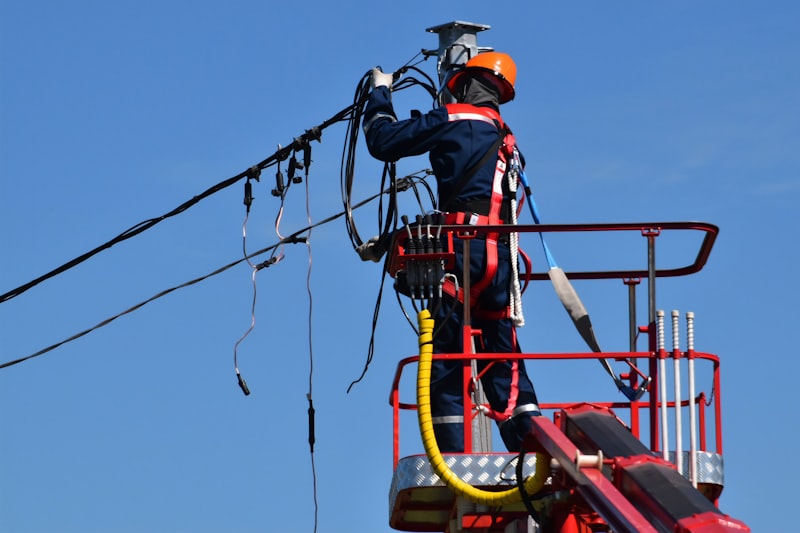Firstly, safety is paramount. Ensure the car is parked on a level surface with the parking brake engaged. Use wheel chocks to secure the wheels and prevent any unintended movement. Additionally, wear protective gear such as gloves and safety glasses to shield yourself from potential hazards.
Start by disconnecting the negative terminal of the battery to prevent electrical accidents. Then, lift the car securely using a jack and support it with jack stands. This provides ample space to access the transmission bellhousing underneath the vehicle.
Next, locate the transmission bellhousing. It’s typically situated at the rear of the engine block and connects the transmission to the engine. Inspect the bellhousing carefully for any signs of damage or leaks that might indicate underlying issues.
Before proceeding further, prepare your workspace with the necessary tools: socket wrench set, torque wrench, penetrating oil, and a floor creeper for easier access under the car. These tools will facilitate the removal and installation process.
To begin the repair, start by removing any components obstructing access to the bellhousing, such as the starter motor or exhaust system parts. Use penetrating oil to loosen stubborn bolts and nuts that may have corroded over time.
Once the area is clear, carefully unbolt the transmission bellhousing from the engine block using the appropriate socket sizes. Keep track of each bolt and ensure they are stored safely for reinstallation later.
Inspect the bellhousing thoroughly once it’s removed. Check for cracks, worn-out seals, or other damage that may have caused transmission fluid leaks or operational issues. Replace any damaged components with new ones to ensure optimal performance and longevity.
After repairs are completed, reverse the removal process to reinstall the transmission bellhousing. Tighten the bolts securely using a torque wrench to the manufacturer’s specifications to prevent any future issues.
Finally, reconnect the starter motor, exhaust components, and the battery terminal. Lower the vehicle carefully from the jack stands and test-drive the car to ensure the transmission operates smoothly without any abnormal noises or vibrations.
Following these steps diligently can help you successfully fix a car’s transmission bellhousing, saving both time and money compared to a professional repair service. With proper attention to detail and safety precautions, you can restore your vehicle’s transmission system to optimal condition.
Mastering Mechanics: A Complete DIY Guide to Repairing Your Car’s Transmission Bellhousing
So, you’ve noticed a strange whining noise coming from under your car’s hood. Maybe it’s that ominous clunking sound when you shift gears. These could be signs that your transmission bellhousing needs attention. Don’t panic – tackling this repair yourself can save you a bundle and give you a sense of accomplishment.
First things first, what exactly is the transmission bellhousing? Picture it as the protective casing that houses the clutch assembly and connects your transmission to the engine block. It’s crucial for maintaining alignment and supporting the transmission’s components.
Before diving in, park your vehicle on a level surface and engage the parking brake for safety. Start by disconnecting the battery to prevent any electrical mishaps. Then, it’s time to jack up your car and secure it with jack stands.
Now, onto the nitty-gritty. Remove the bolts securing the transmission bellhousing using a socket wrench. Keep them organized – you’ll need them later. Once loosened, gently pry the bellhousing away from the transmission. Be cautious not to damage the surrounding components.
Inspect the bellhousing thoroughly. Look for cracks, wear, or any signs of leakage. This visual inspection can reveal underlying issues that might need addressing beyond a simple repair.
If it’s a minor issue like a cracked housing, you can often mend it with a specialized epoxy or weld. However, for more serious damage, replacement might be the only option. Ensure you have the correct replacement part before proceeding.
When reassembling, reverse the disassembly steps carefully. Torque the bolts to manufacturer specifications to avoid any future problems. Double-check your work and lower your car back to the ground.
Gearhead Essentials: Step-by-Step Instructions for Fixing a Transmission Bellhousing Like a Pro
Fixing a transmission bellhousing requires precision and the right tools. Whether you’re a seasoned mechanic or a DIY enthusiast, mastering this task can save time and money. Here’s how to tackle it like a pro.
Firstly, gather your gearhead essentials: a socket set, torque wrench, and a reliable jack. Safety goggles and gloves are a must for protection. Begin by securing the vehicle on a level surface and disconnecting the battery to avoid electrical mishaps.
Next, remove the transmission to access the bellhousing. This involves loosening the bolts in a crisscross pattern to prevent warping. With the transmission safely aside, inspect the bellhousing for cracks or wear. Cleanliness is crucial; debris can lead to improper seating and future leaks.
Now, it’s time for the fix. Use a suitable epoxy or welding kit for minor cracks. For more significant damage, replacement may be necessary. Ensure the replacement bellhousing matches your vehicle’s specifications to maintain optimal performance.
Once repaired or replaced, reassemble the transmission carefully. Torque the bolts to manufacturer specifications and reconnect any wiring or hoses. Double-check all connections before lowering the vehicle and reconnecting the battery.
Testing is the final crucial step. Start the engine and engage the gears, checking for any unusual sounds or leaks. Address any issues promptly to prevent further damage.
Fixing a transmission bellhousing isn’t just about mechanical skill; it’s about attention to detail and safety. With these step-by-step instructions and the right approach, you can handle this task confidently, ensuring your vehicle runs smoothly for miles to come.
This article is crafted to be engaging and informative, following SEO best practices while maintaining a conversational tone and providing practical advice for readers interested in automotive maintenance.
Unveiling the Mysteries: How to Tackle Transmission Bellhousing Repairs on Your Own
Tackling transmission bellhousing repairs can seem daunting at first glance, but with the right approach, it’s a task that can be managed effectively by any dedicated DIY enthusiast. The bellhousing of your vehicle’s transmission plays a crucial role in protecting the gears and ensuring smooth operation. Over time, however, wear and tear can lead to leaks, cracks, or other issues that require attention.
Before diving into the repair process, it’s essential to gather the necessary tools and materials. A socket set, torque wrench, jack stands, and a repair manual specific to your vehicle are indispensable. These resources not only make the job easier but also ensure you have everything needed to complete the repair safely.
Begin by safely lifting and securing your vehicle on jack stands, ensuring stability before proceeding. The next step involves removing the transmission, a procedure that varies depending on your vehicle’s make and model. Referencing your repair manual will guide you through this process, highlighting any particularities or steps unique to your vehicle.
Once the transmission is accessible, carefully inspect the bellhousing for any signs of damage or wear. Common issues include cracks along the casing or worn-out seals causing fluid leaks. Addressing these issues promptly can prevent further damage to your vehicle’s transmission system, potentially saving you from more extensive repairs down the road.
When replacing components, always use high-quality parts recommended by your vehicle’s manufacturer or trusted automotive experts. This ensures durability and performance, crucial for maintaining the integrity of your transmission system. After repairs are completed, reinstalling the transmission follows a reverse of the removal process, ensuring each step is executed with precision and care.
Taking on transmission bellhousing repairs yourself can be a rewarding experience, offering a deeper understanding of your vehicle’s mechanics and potentially saving on costly repair bills. By following these steps and using reliable resources, you can confidently tackle this task and keep your vehicle running smoothly for miles to come.
Gear Up: Essential Tools and Techniques for Successful Transmission Bellhousing Fixes

First and foremost, having a quality set of wrenches and sockets is crucial. Since bellhousings often require bolts of various sizes and types, having a comprehensive socket set with both metric and standard sizes ensures you can tackle any bolt that comes your way. A ratchet wrench with a comfortable grip can also make tight spaces more accessible and allow for easier maneuverability during the repair process.
Next, a torque wrench is indispensable for ensuring that bolts are tightened to the manufacturer’s specifications. Over-tightening or under-tightening bolts can lead to leaks or even damage to the bellhousing, so using a torque wrench helps achieve the correct torque with precision.
For removing stubborn bolts or nuts, penetrating oil can work wonders. Apply it generously to rusty or stuck bolts and allow it to penetrate for a few minutes before attempting to loosen them. This simple step can save you from the frustration of breaking bolts or damaging threads.
When it comes to techniques, cleanliness is key. Before beginning any repairs, thoroughly clean the area around the bellhousing to remove dirt, grease, and debris. This ensures a clean workspace and reduces the risk of contaminants entering the transmission during the repair process.
Additionally, following a systematic approach to disassembly and reassembly is essential. Take note of the sequence in which bolts are removed and parts are disassembled, as this will make it easier to reassemble the bellhousing correctly later on. Keeping track of each step prevents confusion and ensures that no steps are missed during the repair process.
Lastly, don’t hesitate to consult repair manuals or online resources for specific instructions and torque specifications. These resources provide valuable guidance and ensure that you’re following the manufacturer’s recommendations for a reliable repair.
By gearing up with the right tools and techniques, you can tackle transmission bellhousing fixes confidently and efficiently. Whether you’re replacing a cracked bellhousing or performing routine maintenance, having the right tools and following proper techniques ensures a successful outcome without unnecessary setbacks.
Expert Insights: Detailed Steps to Successfully Repair Your Car’s Transmission Bellhousing
When it comes to maintaining your car’s performance, ensuring the health of your transmission bellhousing is crucial. This component houses the transmission’s clutch and gears, protecting them from external elements while maintaining alignment within the engine bay.
Begin by inspecting the bellhousing for any signs of damage or wear. Look out for cracks, leaks, or unusual noises during operation. Diagnosis involves checking transmission fluid levels and conducting a visual inspection for leaks around the bellhousing area.
Before starting repairs, gather all necessary tools and replacement parts. This includes safety equipment such as gloves and goggles to ensure safe handling throughout the process.
To access the bellhousing, the transmission must be removed carefully. This step involves disconnecting electrical connectors, cooling lines, and the drive shaft. Support the transmission securely using a jack stand to prevent damage during removal.
With the transmission out of the way, detach the bellhousing from the engine block. Depending on the vehicle model, this may involve removing bolts securing it to the engine and separating it from the transmission assembly.
Examine the removed bellhousing thoroughly for signs of wear or damage. Clean the mating surfaces on both the bellhousing and engine block to ensure a smooth reinstallation process.
Based on the inspection findings, decide whether to replace the bellhousing with a new unit or proceed with repairs. Cracks or significant damage often necessitate replacement to prevent future issues.
Carefully reinstall the bellhousing onto the engine block, ensuring all bolts are tightened to manufacturer specifications. Reconnect the transmission, ensuring proper alignment and secure attachment.
After reassembly, refill the transmission with the recommended fluid and test the vehicle’s operation. Listen for any abnormal sounds and check for leaks around the bellhousing area.
Regularly monitor transmission fluid levels and inspect the bellhousing for leaks or signs of wear. Address any issues promptly to prevent extensive damage and ensure prolonged transmission health.
Repairing your car’s transmission bellhousing requires careful inspection, preparation, and methodical execution of steps to maintain optimal vehicle performance. By following these detailed steps and performing regular maintenance, you can extend the lifespan of your transmission and ensure safe, reliable driving experiences.
This article provides a comprehensive guide to repairing a car’s transmission bellhousing, focusing on clarity, engagement, and informative value for the reader.
DIY Drivetrain Fixes: Your Comprehensive Guide to Handling Transmission Bellhousing Issues
Transmission bellhousing issues can be a headache for any car owner, but fear not! With a bit of know-how and some tools, you can tackle these problems yourself and save on hefty repair bills. The bellhousing, which houses the transmission components, is crucial for smooth gear shifting and overall drivetrain performance.
One common issue drivers face is leaks from the bellhousing. These leaks can occur due to worn-out seals or gaskets, allowing transmission fluid to escape. If you notice puddles under your parked car or find low transmission fluid levels, it might be time to inspect the bellhousing. A thorough examination will reveal the source of the leak, whether it’s a cracked housing or a faulty seal.
Repairing a leaky bellhousing involves cleaning the area thoroughly, removing the old gasket or sealant, and applying a new one. It’s crucial to use the right type of sealant recommended for your transmission model to prevent future leaks. Take your time during this process to ensure a proper seal, as even a small gap can lead to recurring issues.
Another common bellhousing problem is damage caused by worn-out transmission mounts or excessive engine vibrations. Over time, these vibrations can crack the bellhousing or loosen its bolts, leading to rattling noises or even misalignment issues. Inspecting and replacing worn-out mounts can significantly extend the life of your bellhousing and prevent costly repairs down the road.
When tackling bellhousing repairs, always refer to your vehicle’s service manual for specific instructions and torque settings. Using the correct tools and following safety precautions are essential to avoid damaging other drivetrain components or causing injury.
By addressing transmission bellhousing issues promptly and correctly, you can ensure your vehicle runs smoothly and safely for miles to come. Remember, a little DIY maintenance goes a long way in keeping your drivetrain in top shape!
This article provides a comprehensive guide while maintaining a conversational tone and incorporating SEO principles to engage readers interested in DIY automotive repairs.
Mechanic’s Secrets: Pro Tips for Troubleshooting and Fixing Transmission Bellhousing Problems

One of the most common challenges faced with transmission bellhousings is identifying leaks. These leaks can stem from various causes, such as worn seals or cracks in the bellhousing itself. A meticulous inspection, often involving cleaning and pressure testing, is essential to pinpoint the exact source of the leak. Once identified, replacing the faulty seal or repairing the crack promptly is crucial to prevent further damage to the transmission.
Another critical aspect of addressing bellhousing issues involves checking for alignment problems. Misalignment can lead to excessive wear on transmission components and cause erratic shifting or even transmission failure over time. Mechanics often use specialized tools to ensure the bellhousing is properly aligned with the engine and transmission, minimizing future issues.
Moreover, noise and vibration are telltale signs of potential bellhousing problems. These can indicate loose bolts, damaged mounts, or internal transmission issues affecting the bellhousing. Mechanics rely on their keen sense of observation and diagnostic tools to isolate and address these issues promptly, preventing further damage and restoring optimal performance.
In the realm of transmission repairs, preventive maintenance plays a pivotal role. Regular inspections and fluid checks can help detect early signs of bellhousing problems before they escalate into costly repairs. Mechanics often advise vehicle owners on the importance of adhering to manufacturer-recommended maintenance schedules to prolong the lifespan of their transmission components.
Mastering the art of troubleshooting and fixing transmission bellhousing problems requires a blend of technical knowledge and hands-on experience. Mechanics who excel in this field leverage their expertise to provide reliable solutions that keep vehicles running smoothly on the road. By staying proactive and attentive to the nuances of transmission maintenance, mechanics uphold their reputation for delivering quality service and ensuring customer satisfaction.
Frequently Asked Questions
How do you diagnose a bellhousing issue in a car transmission?
Learn how to diagnose bellhousing issues in car transmissions efficiently with our concise guide. Discover common symptoms like abnormal noises and clutch problems, along with diagnostic steps using visual inspection and testing procedures. Ensure your vehicle’s transmission health with expert insights.
Step-by-step: How to remove and replace a transmission bellhousing?
Learn how to effectively remove and replace a transmission bellhousing with our step-by-step guide. This FAQ provides clear instructions for the process, ensuring you can perform the task confidently and efficiently.
What tools are needed to fix a car’s transmission bellhousing?
Learn about the essential tools required to fix a car’s transmission bellhousing efficiently. Discover the specific tools necessary for this task, ensuring you have everything needed for a successful repair or replacement.
Common problems when fixing a car’s transmission bellhousing
Discover common issues encountered while repairing a car’s transmission bellhousing with this concise FAQ. Learn about prevalent challenges and effective troubleshooting tips to ensure smooth repair processes.
Safety tips for DIY transmission bellhousing repairs
Learn essential safety tips for DIY transmission bellhousing repairs to ensure a safe and successful project. Discover key precautions and best practices to avoid hazards and achieve effective repairs.



